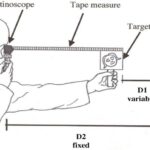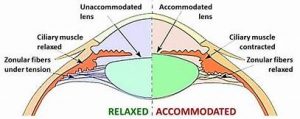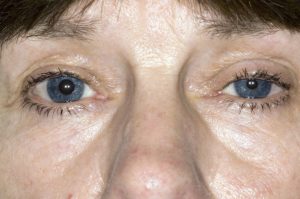Introduction:
Dynamic retinoscopy is a crucial technique used in optometry and ophthalmology to assess the refractive status of the eye. It is a dynamic, objective method that measures the eye’s ability to focus on objects at various distances. Here, we would delve into the world of dynamic retinoscopy, exploring its principles, applications, benefits and limitations.
What is Dynamic Retinoscopy?
Dynamic retinoscopy is a technique that uses a retinoscope to measure the eye’s refractive power while the patient is actively focusing on objects at different distances. Unlike static retinoscopy, which measures the eye’s refractive power in a fixed state, dynamic retinoscopy assesses the eye’s ability to adapt to changing visual demands.
Principles of Dynamic Retinoscopy:
The technique relies on the principle of retinoscopy, which involves shining a light into the eye and observing the reflection. The retinoscope measures the direction and magnitude of the reflection, indicating the eye’s refractive power.
In dynamic retinoscopy, the patient is asked to focus on objects at various distances, such as near and far points. The retinoscope measures the eye’s refractive power in real-time, providing an accurate assessment of the eye’s ability to adapt to changing visual demands.
Applications of Dynamic Retinoscopy:
Dynamic retinoscopy has several applications in optometry and ophthalmology, including:
1. Refractive error assessment: Dynamic retinoscopy helps diagnose refractive errors, such as myopia, hyperopia and astigmatism.
2. Accommodative dysfunction assessment: The technique evaluates the eye’s ability to accommodate, helping diagnose conditions like accommodative insufficiency and accommodative excess.
3. Presbyopia assessment: Dynamic retinoscopy assesses the eye’s ability to focus on near objects, helping diagnose presbyopia.
4. Pediatric vision assessment: The technique is useful in assessing refractive errors and accommodative function in children.
Benefits of Dynamic Retinoscopy:
Dynamic retinoscopy offers several benefits, including:
1. Objective assessment: the technique provides an objective measurement of the eye’s refractive power, reducing reliance on subjective patient feedback.
2. Accurate diagnosis: Dynamic retinoscopy helps diagnose refractive errors and accommodative dysfunction accurately.
3. Early detection: The technique facilitates early detection of refractive errors and accommodative dysfunction, enabling timely intervention.
4. Personalized treatment: Dynamic retinoscopy guides personalized treatment plans, improving patient outcomes.
Limitations of Dynamic Retinoscopy:
While dynamic retinoscopy is a valuable technique, it has some limitations:
1. Operator skill: The accuracy of dynamic retinoscopy depends on the operator’s skill and experience.
2. Patient cooperation: The technique requires patient cooperation, which can be challenging in pediatric or special needs populations.
3. Equipment limitations: The quality of the retinoscope and equipment can impact the accuracy of measurements.
Best Practices for Dynamic Retinoscopy:
To ensure accurate and reliable results, follow these best practices:
1. Use a high-quality retinoscope: Invest in a reliable retinoscope with good optical quality.
2. Calibrate the retinoscope: Regularly calibrate the retinoscope to ensure accurate measurements.
3. Position the patient correctly: Ensure the patient is comfortable and positioned correctly for examination.
4. Use appropriate target: Use appropriate targets for near and far vision to assess accommodative function.
Conclusion:
Dynamic retinoscopy is a powerful tool in optometry and ophthalmology, offering an objective assessment of the eye’s refractive power and accommodative function. By understanding the principles, applications, benefits and limitations of dynamic retinoscopy, eye care professionals can provide accurate diagnoses and personalized treatment plans, improving patient outcomes.










